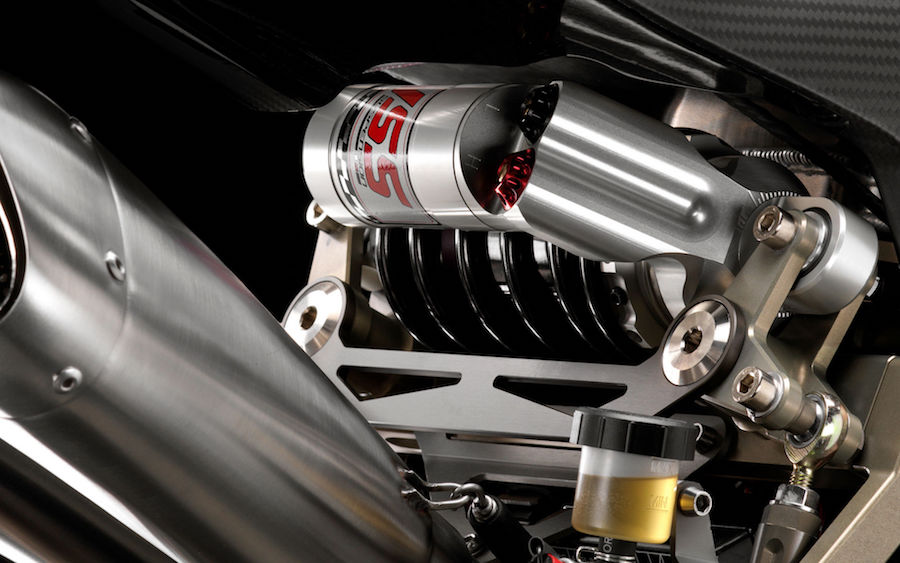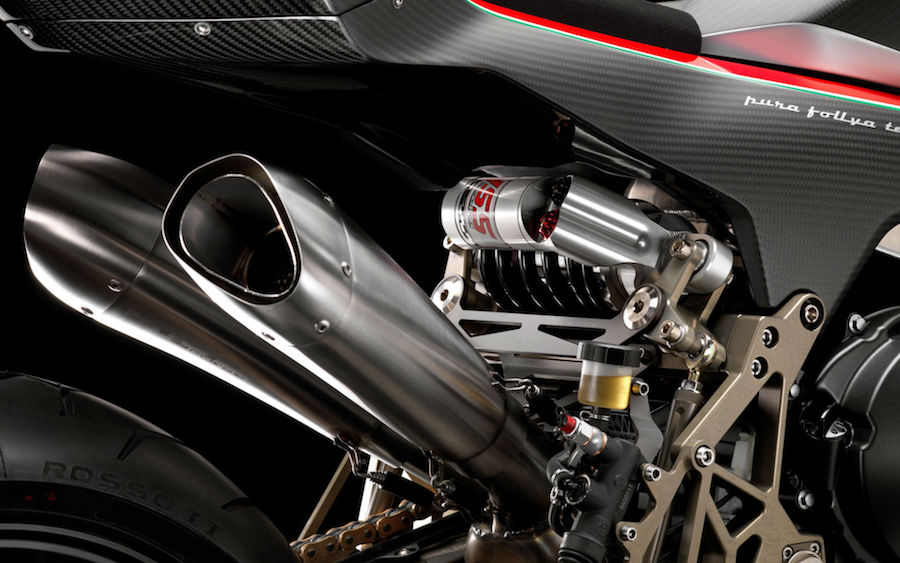The Italian Moto2 bike for the road
It’s been six long years since we first got a glimpse of the 986 M2. Though Vyrus originally planned it as a Moto2 racebike, the firm always said it would make a road-going version, and now it has finally come good on that promise.
While the Italian boutique builder has been turning out its hub-centre-steered Bimota Tesi descendants – the Ducati-powered 984 and 985 – since 2001, the 986 represents a departure. It retains the hub-steered, swingarm-based front suspension design that defines the firm’s bikes, but the move to an in-line four-cylinder engine from a Honda CBR600RR means it’s a totally new machine.
The firm initially hoped, as many did, that the four-stroke Moto2 series with its standard CBR600RR-based engines and free chassis regulations would provide a springboard for alternative frame designs. It launched the 986 M2 as a racebike in 2011 with the hope of attracting Moto2 teams as clients. However, it underestimated the conservatism of racing teams; with their existence relying on sponsorship and results, they prefer to stick with tried-and-tested ideas. While a novel chassis like the Vyrus might have turned out to be a revolution, the equal risk that it might have been outclassed meant that teams weren’t keen.
An engineless kit version of the bike went on sale as a racer in 2014, however, the promised street model has been a long time coming. Now it’s finally been revealed and it’s just as jaw-dropping as the racer was back in 2011.

The frame
The intricate frame is CNC milled from solid aluminium alloy (Ergal) with fabricated swingarms at either end, following the original Bimota Tesi style but with front and rear shocks mounted transversely and operated by rockers.

The stoppers
Brembo brakes are fitted at both ends, although it’s up to the customer to choose which caliper suits their purpose and wallet. There’s also a choice of master cylinders and shock absorbers.

The mill
Engine-wise, it’s a stock CBR600RR. The firm suggests it will sell the bikes either as complete units or in kit form with no engine, but says that a total of 50 will be built. Prices haven’t been established, and given the wide choice of optional parts will vary widely from one bike to another.

The numbers
Well, the engine’s a known quantity, and the firm claims that despite its complexity the hub-steered chassis reduces weight – thanks largely to the carbon bodywork and lightweight components – to a mere 151kg. Performance should therefore add up to something rather special.
By Ben Purvis


